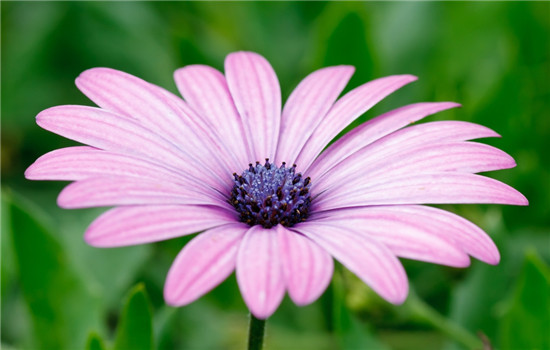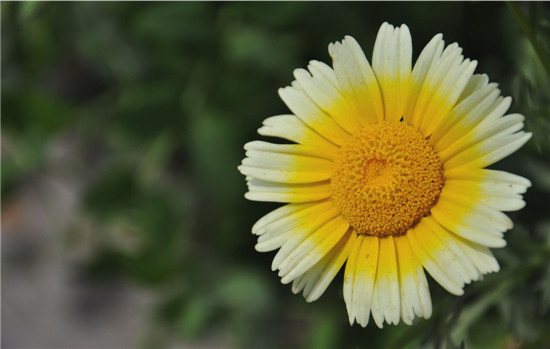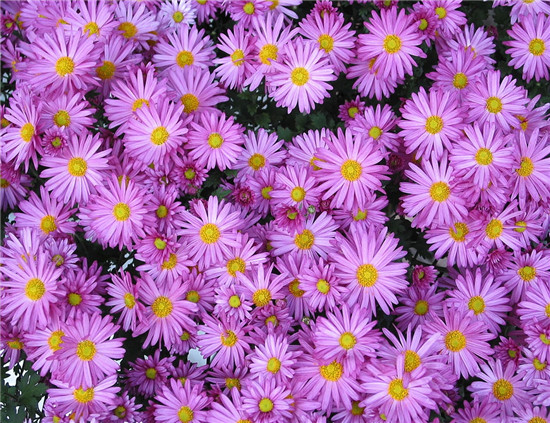Flower language and varieties of daisies
Daisy is a kind of Compositae plant, also known as horsehead orchid, long-lived chrysanthemum, flowering in spring. Next, let's take a look at the flower language and varieties of daisies.

Daisies are perennial herbs in Compositae. Regular autumn sowing for 2-year cultivation (spring sowing for annual cultivation in alpine areas). The plant height is 15-20 cm. Leaves basally fascicled, spatulate. Capitate inflorescences solitary, flowers 3-5 cm in diameter, ligulate flowers striate. There are white, pink, red and other colors. There are usually about 10 flowers per plant. The florescence is from March to June. Daisies are cold-resistant and suitable for cool climate. It is easy to die if it blossoms poorly under hot conditions. It can be sown and propagated in the open field seedbed in mid-August or early September. After sowing, it is appropriate to use Reed curtain to shade, not covered with film.
All the seedlings come out and the curtains are removed. When two or three leaves are planted for the first time, the bare roots do not take the persistent soil, the border soil should be moist, and the watering should be timely. If necessary, the Reed curtain shades the seedlings for two or three days, and the soil can be watered again when the soil is dry. Two days later, loosen the soil to preserve moisture and squat seedlings. When the seedlings produce 3-4 true leaves, transplanting with soil blocks once or twice can promote a large number of lateral roots and prevent overgrowth. Apply appropriate amount of base fertilizer in the border. In the coming year, the plant shape is short and strong, the stress resistance is strong, and the flowers are big, plump and colorful. It was watered once at the end of October, and when the border soil was not sticky, it was hoarded into the sunny border to survive the winter and covered with mats at night to protect against the cold.

Daisies survive the winter, but they are frosty and air-dried. The thickness of the mat and the removal time will be controlled flexibly depending on the growth of the seedlings and the cold and warm weather, so as to prevent overgrowth and effectively control the florescence. After one or two transplants in autumn, flower beds can be directly planted in spring when they see flowers. For those who have not been transplanted by inverted border after dividing seedlings in autumn, it is appropriate to plant in the flower bed or go out of the nursery to list in spring after the border with sufficient base fertilizer is preserved and formed. When planting, apply rotten leaf fertilizer or stable as base fertilizer. After planting, it should be watered every 7-10 days. During the growing period, daisies like to have plenty of sunshine and are not tolerant to shade.
What is Daisy language?
Pure beauty is naive, joy, happiness, peace, hope, and my favorite "love deep in my heart". It is like a pure and innocent shy girl, although she is not the kind of woman who immediately attracts people's attention, but, the more you look at it, the more you will find her beauty and advantages. In mythology, she was transformed by Virgis, the elf of the forest. When Veligis had a good time with her lover, she was discovered by the god of the orchard, and she became a daisy when she was chased.
Daisies are like an elegant song. It's as if someone is singing in your ear.

"I love you very much. So willing, do not hinder you, let you fly to a happy place. " Just like the flower words of daisies, "Love hidden in the bottom of my heart".
Love in memory is more painful than love in waiting. That is the daisy language of the painter Huiying.
Love that cannot be told is more ardent than love that can be confessed. That's the daisy language of the killer Pu Yi.
Love that wakes up too late is sadder than love that will never meet. That is the daisy language of Interpol Zhengyou.
It is said that daisies with small white petals have several meanings.
The first is eternal happiness. It is said that Beltis, the leprechaun in the forest, is transformed into a daisy. She is a lively and happy child.
Second, do you love me? Therefore, daisies are usually flowers sent by secret admirers.
The third is parting.
The fourth is the love hidden from the bottom of my heart. It's similar to the second one.
There is another kind, the flower language of daisies also has a strong meaning.

Common cultivated varieties of daisies are:
First, Habanella series: petals long, flower diameter up to 150px, there are white, pink, red.
Second, the ball series: the petals are wrinkled, the flower diameter is 100px, and there are white, pink and red.
Third, Rogaro series: early flowering, flower diameter for 75px, there are red, rose pink, pink, white.
Fourth, Tasso series: the petals are wrinkled, the flower diameter is 150px, pink, white and red.
Morphological characteristics of daisy
First, perennial or annual trapeziform herbs, the height is generally about 250px, flowering in spring.
Second, the leaves are basal, spoon-shaped, herbaceous, the top is round and obtuse, and the base attenuates into a stalk.
Third, there are sparse obtuse teeth or wavy teeth. Head solitary, usually 25-35mm in diam., scape hairy.
Fourth, the involucre is hemispherical or broad bell-shaped, involucral bracts nearly 2 layers, showing a long oval, tip slightly obtuse, outside pilose.
Breeding mode of daisies
First, seed propagation
The seeds of daisies are smaller and more likely to be sown. However, sowing seedlings often can not maintain the characteristics of the mother plant. Sow the seeds with fine sand and cover with fine soil about 12.5px thickness. after sowing, cover the sunshade net and water, and keep the temperature at about 28 ℃.
Second, separate plant propagation
For some good varieties, the split plant method can be used to propagate, but the growth situation will not be true to the seedling, and the fruiting is poor.
Third, cuttage propagation
The cuttings can be propagated throughout the growing season, and the survival rate is the highest from April to June. Cut the branches with 3-5 nodes and the length of 80-100mm, and remove the leaves at the base, and the depth of penetration is generally the length of the cuttings.
The above is the whole content of the flower language and varieties of daisies that I have summarized for you. I hope this article can help you. Please continue to follow us.
Breeding mode of daisies
First, seed propagation
The seeds of daisies are smaller and more likely to be sown. However, sowing seedlings often can not maintain the characteristics of the mother plant. Sow the seeds with fine sand and cover with fine soil about 12.5px thickness. after sowing, cover the sunshade net and water, and keep the temperature at about 28 ℃.
Second, separate plant propagation
For some good varieties, the split plant method can be used to propagate, but the growth situation will not be true to the seedling, and the fruiting is poor.
Third, cuttage propagation
The cuttings can be propagated throughout the growing season, and the survival rate is the highest from April to June. Cut the branches with 3-5 nodes and the length of 80-100mm, and remove the leaves at the base, and the depth of penetration is generally the length of the cuttings.
The above is the whole content of the flower language and varieties of daisies that I have summarized for you. I hope this article can help you. Please continue to follow us.
Related
- Wuhan Hospital Iron Tree Blooming Result Was Instantly Frightened by the Gardener Master
- Which variety of camellia is the most fragrant and best? Which one do you like best?
- What is the small blue coat, the breeding methods and matters needing attention of the succulent plant
- Dormancy time and maintenance management of succulent plants during dormancy
- Minas succulent how to raise, Minas succulent plant pictures
- What are the varieties of winter succulent plants
- How to raise succulent plants in twelve rolls? let's take a look at some experience of breeding twelve rolls.
- Attention should be paid to water control for succulent plants during dormant period (winter and summer)
- Watering experience of twelve rolls of succulent plants
- Techniques for fertilizing succulent plants. An article will let you know how to fertilize succulent plants.



